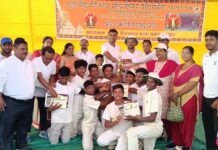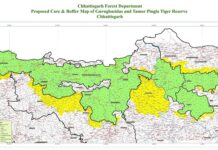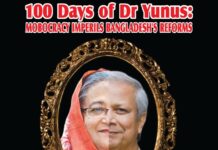By Our Correspondent
ARIZONA/NEW DELHI: About 89 out of the 106 notified national parks in India i.e. about 84% were established in the areas inhabited by the Scheduled Tribes and indigenous peoples across the world will suffer destruction if Target 3 of the Kunming-Montreal Global Biodiversity Framework of the Conference of the Parties to the UN Convention on Biological Diversity to increase global protected areas at least to 30 percent from the current 16 per cent of the world’s terrestrial area is realized.” – warned Mr Suhas Chakma, Regional Campaign Manager of the IPLP Initiative on Indigenous Peoples Affected by Protected Areas while addressing the “Symposium on Conservation, Racism and Indigenous Peoples Human Rights” organized by the University of Arizona today.
Giving further details about the remaining 17 national parks not inhabited by the STs in India, Mr Chakma stated, two national parks (South Button Island National Park and Rani Jhansi Marine National Park under Andaman and Nicobar Islands) are marine areas and do not have any human habitation; four are zoos (Van Vihar, Kasu Brahmananda Reddy, Mahaveer Harina Vanasthali and Salim Ali); on four national parks (Col. Sherjung Simbalbara, Neora Valley, Singalila and Fossil) information about inhabitance of the STs could be verified and while only in seven national parks, general category people were impacted.
The current expansion of protected areas whether Kumbhalgarh Wildlife Sanctuary in Rajasthan or Nauradehi Sanctuary in Madhya Pradesh mainly impact the STs and other forest dwellers. Assam’s notification for the Barak Bhuban Wildlife Sanctuary of 19 June 2022 states that “the area is free from encroachment as per record, there are no rights and concessions of any person in the area” but indigenous Khasi people living inside the proposed sanctuary have records including Kachukhal Part-2 Khasi Punjee village being established in 1914!
“Across Asia, indigenous peoples face massive human rights violations in the protected areas. In the Ujungkulon National Park of Indonesia, indigenous peoples are denied the right to proper housing, health, education, electricity and security while indigenous leaders such Ms Heng Saphen living inside the Beng Per Wildlife Sanctuary of Cambodia have been convicted by a Kangaroo court for cultivating on her own land. After the Botum Sakor National Park of Cambodia was handed over to the Royal Group in 2021, its forest coverage reduced to just 18% of the park as of July 2023 because of the massive logging.” – also stated Mr Chakma
“That the STs who constitute about 8.6% of the total population of India also constitute about 84% of the communities impacted by the protected areas reflect the disproportionate targeting of indigenous peoples for saving the world’s biodiversity and ecosystem. Worse, their lifestyles and livelihood practices have been criminalized from the colonial times such as the Forest Act of 1927. On 21 February 2024, Chief Minister of Odisha ordered withdrawal of over 48,000 cases against tribal community members relating to excise (making country liquor), forest offence, and land encroachment. These 48,000 pending cases expose the extent of the criminalisation of their lifestyles and livelihood practices and if 48,000 cases are pending in one State i.e. Odisha alone, one can conjure up the number of cases pending against the STs in India.”- further stated Mr Chakma.
“If indigenous peoples win the right to stay inside the protected areas, they live under constant human rights violations such as restrictions of the freedom of movement, little or no access to development initiatives, excessive surveillance, sexual violence and criminal cases for alleged making country-liquor (excise) cases, forest offences, poaching etc. If they accept relocation, the world simply has not seen a single successful case of rehabilitation and resettlement.”- furthermore stated Mr Chakma.
The most serious emerging challenge is the increasing privatisation of the protected areas in the name of eco-tourism and sustainable eco-tourism etc. The protected areas are increasingly becoming more of tourism spots and less about protection of the species, with expensive safaris being provided as recreational opportunities to the elites of the world, often in the name of indigenous peoples. The role of the indigenous peoples in such eco-tourism spots have been reduced to indigenous peoples (especially women, girls and elderly people) being made to sit in traditional replicas of their houses dressed up with traditional dresses, ornaments, music instruments etc and at times, performing traditional music and dances until the tourists depart. More often than not, indigenous peoples are projected like animals in a zoo in many of the eco-tourism spots.
Mr Chakma called for human rights oversight mechanisms on protected areas which are treated like fortresses. These fortresses are akin to the Guantanamo Bay where human rights violations by the government or private rangers can be perpetrated by using firm-arms without any respect for the UN Code of Conduct for Law Enforcement Officials.






























